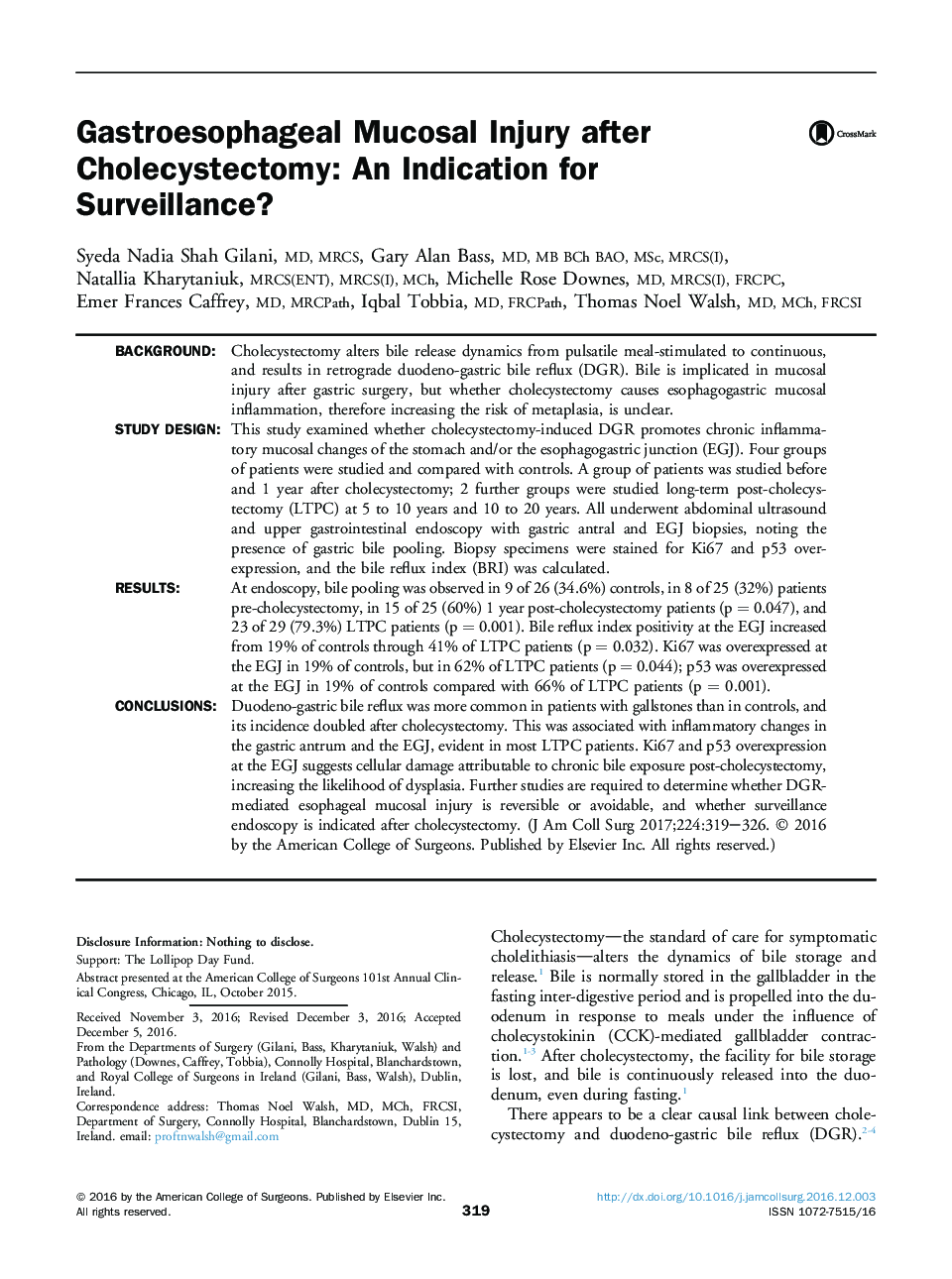| کد مقاله | کد نشریه | سال انتشار | مقاله انگلیسی | نسخه تمام متن |
|---|---|---|---|---|
| 5733146 | 1612194 | 2017 | 8 صفحه PDF | دانلود رایگان |
BackgroundCholecystectomy alters bile release dynamics from pulsatile meal-stimulated to continuous, and results in retrograde duodeno-gastric bile reflux (DGR). Bile is implicated in mucosal injury after gastric surgery, but whether cholecystectomy causes esophagogastric mucosal inflammation, therefore increasing the risk of metaplasia, is unclear.Study DesignThis study examined whether cholecystectomy-induced DGR promotes chronic inflammatory mucosal changes of the stomach and/or the esophagogastric junction (EGJ). Four groups of patients were studied and compared with controls. A group of patients was studied before and 1 year after cholecystectomy; 2 further groups were studied long-term post-cholecystectomy (LTPC) at 5 to 10 years and 10 to 20 years. All underwent abdominal ultrasound and upper gastrointestinal endoscopy with gastric antral and EGJ biopsies, noting the presence of gastric bile pooling. Biopsy specimens were stained for Ki67 and p53 overexpression, and the bile reflux index (BRI) was calculated.ResultsAt endoscopy, bile pooling was observed in 9 of 26 (34.6%) controls, in 8 of 25 (32%) patients pre-cholecystectomy, in 15 of 25 (60%) 1 year post-cholecystectomy patients (p = 0.047), and 23 of 29 (79.3%) LTPC patients (p = 0.001). Bile reflux index positivity at the EGJ increased from 19% of controls through 41% of LTPC patients (p = 0.032). Ki67 was overexpressed at the EGJ in 19% of controls, but in 62% of LTPC patients (p = 0.044); p53 was overexpressed at the EGJ in 19% of controls compared with 66% of LTPC patients (p = 0.001).ConclusionsDuodeno-gastric bile reflux was more common in patients with gallstones than in controls, and its incidence doubled after cholecystectomy. This was associated with inflammatory changes in the gastric antrum and the EGJ, evident in most LTPC patients. Ki67 and p53 overexpression at the EGJ suggests cellular damage attributable to chronic bile exposure post-cholecystectomy, increasing the likelihood of dysplasia. Further studies are required to determine whether DGR-mediated esophageal mucosal injury is reversible or avoidable, and whether surveillance endoscopy is indicated after cholecystectomy.
Journal: Journal of the American College of Surgeons - Volume 224, Issue 3, March 2017, Pages 319-326
